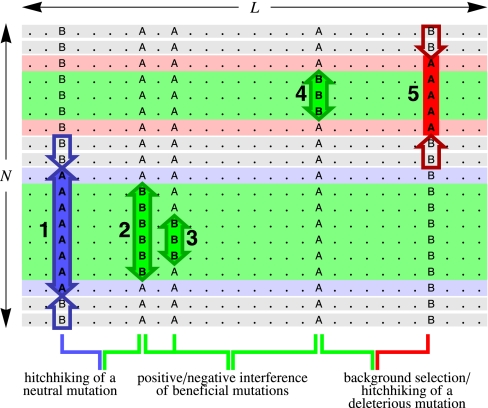Figure 1 .
Interference interactions of mutations in linked genomes. Our model describes the evolution of N individuals with two-nucleotide genomes of length L. In a nonrecombining genome, this process is governed by positive and negative interference interactions between beneficial (green), neutral (blue), and deleterious mutations (red). Shown are five mutations simultaneously present in the population; their expected frequency changes in the absence of genetic linkage are indicated by arrows. The fitness contribution of each mutation additively affects the fitness of all individuals carrying that mutation, which is indicated by the background color of the sequences. Linkage introduces the following interactions: allele 1 may be driven to fixation by allele 2 (hitchhiking of a neutral mutation), alleles 2 and 3 enhance each other’s probability of fixation (positive interference between beneficial mutations), alleles 3 and 4 compete for fixation (negative interference between beneficial mutations), allele 4 may be driven to loss by allele 5 (background selection), or allele 5 may be driven to fixation by allele 4 (hitchhiking of a deleterious mutation).

